Montserrat (Volcanoes of the World #11)

Anastasia
Phil May and Andrea Twigg
Sun 13 Jul 2014 15:42
|
16:48.1N
62:12.6W
Mention Montserrat and most people think of the devastation caused by the
volcanic eruption in 1995. Were you aware of it’s importance to the music
industry prior to that?
The manager of The Beatles, Sir George Martin, built a recording studio
here in 1979. The Associated Independent Recording (AIR) studio was the
venue for some classic bands to record great albums. Paul McCartney, The Police,
Stevie Wonder, The Rolling Stones, Elton John, Dire Straits, Pink Floyd, Duran
Duran, Lou Reed, Black Sabbath, Luther Vandross, Supertramp, Eric Clapton
and Jimmy Buffett are some of the artists and bands who recorded albums
here. Jimmy Buffett wrote one of his famous songs, Volcano, while staying
on Montserrat with a view of the volcano.
Hurricane Hugo destroyed the recording studio in 89 and George Martin
decided it was time to close it down, which was a fortunate decision since
otherwise it would have been destroyed again in 1995. The ruins of the
studio now lie inside the volcano Exclusion Zone.
The eruption destroyed Plymouth, the original capital of the island and so
displaced a large portion of the population. After the eruption the UK
offered all inhabitants free flights back to England. About half left and
did not return, leaving around 5000 inhabitants today.
The exclusion zone covers about half of the island. All the remaining
occupants from that area had to be relocated to the north end of the
island. As part of the reconstruction efforts, George Martin, who
maintains close ties with the island, raised the money to build a substantial
community centre near the new capitol of Little Bay (where we are
anchored).
The island’s GDP is £25 million, of which about half is UK subsidies,
resulting in the inevitable hefty public sector infrastructure. There is a
small tourist industry, mostly built around the day trippers flying in from
Antigua to see the volcano. The one export industry now is mining the sand
deposits which are washed down off the volcano. Much of the destruction of
property is a result of the sand deposits. In some places the sand is 20
feet deep, completely burying large houses. This is good building sand,
with a low salt content, because it has been washed clean by the freshwater
runoff from the slopes of the volcano. It is exported to other parts of
the Caribbean.
They are trying to reduce energy expenditure by tapping into the geothermal
energy of the island. We saw one of the drilling sites on our tour of the
island. They have brought in an Icelandic company to supply the
technology. At present they are analysing the hot gasses to see what
materials are required for the turbines.
Gradually the island is re-establishing itself. We spoke to one lady
who originally flew to England, and lived in Woolwich for a while, but has since
returned and is now running a cafe near the new harbour. So far just two
of the ten people in her family have returned to Montserrat, the rest preferring
life in the UK.
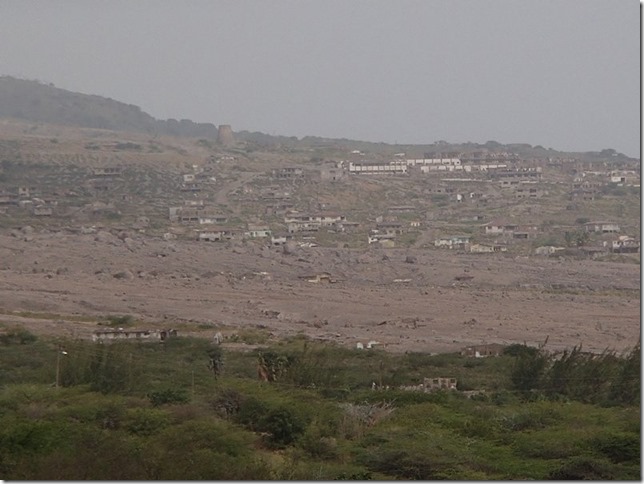 The classic view of the volcanic devastation through the main town of
Plymouth
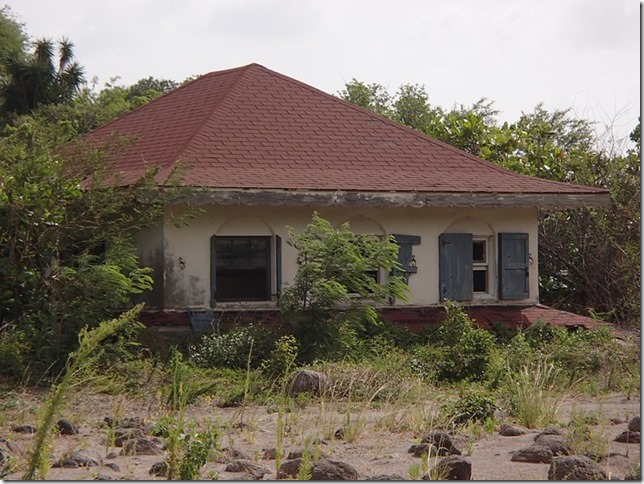 This little house seems intact until you see the original photo of a
beautiful three story house by the golf course.
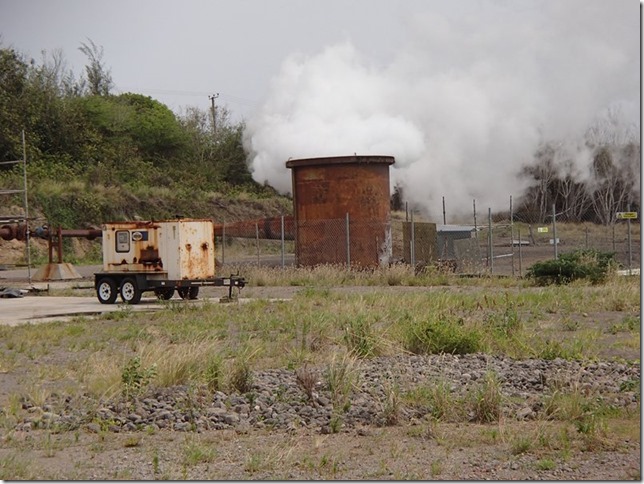 A geothermal well spewing steam
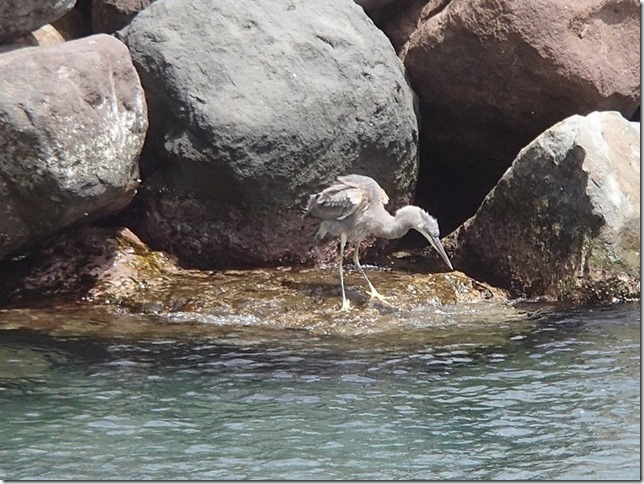 Fishing down by the dinghy dock
 nearby a wonderful example of driftwood dinghy construction
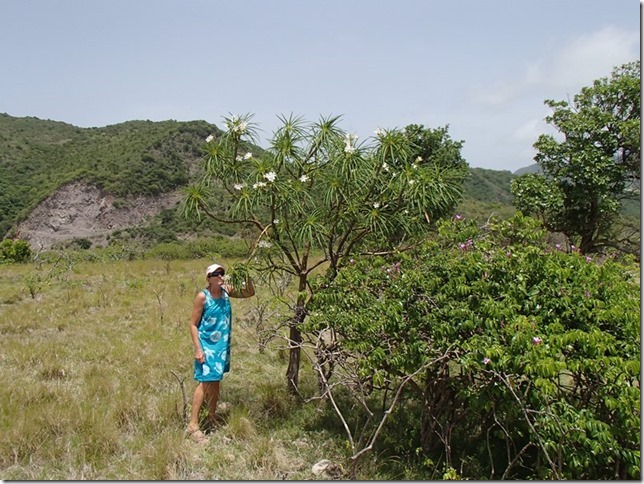 We took a nature trail to a beach near the anchorage
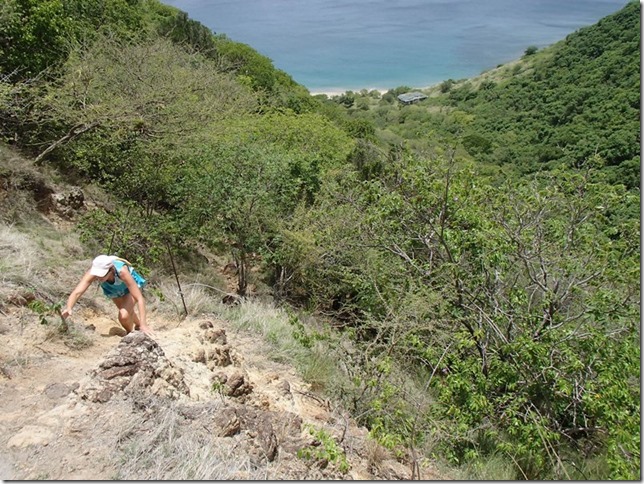 which was a scramble at times
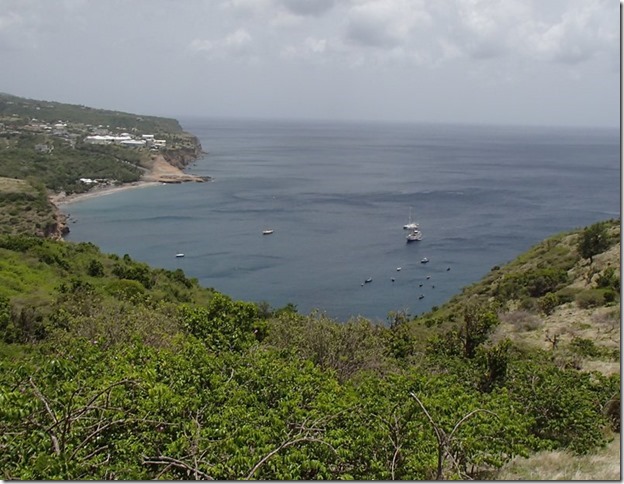 but great views from the top, of Anastasia in the anchorage.
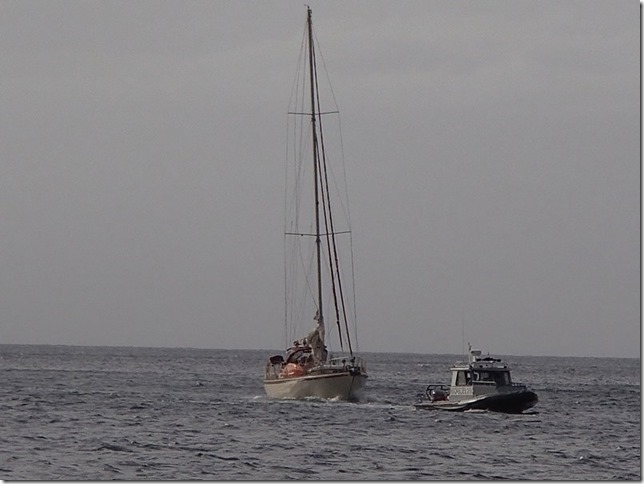 A bit of excitement as a police launch rescues a yacht that lost its
steering and was calling for help as it drifted past the island.
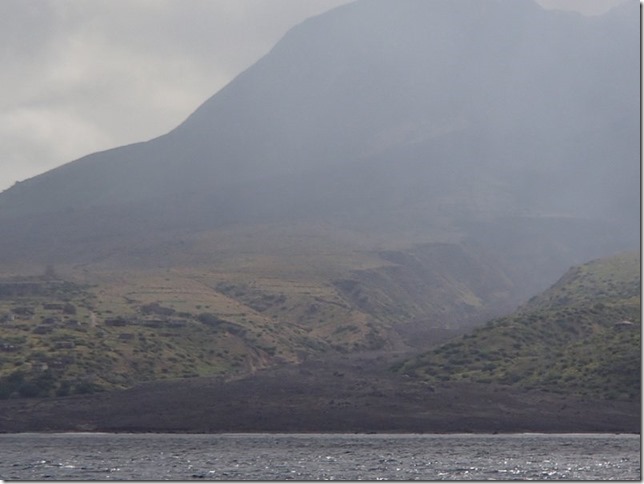 Leaving Montserrat you see more of the volcano
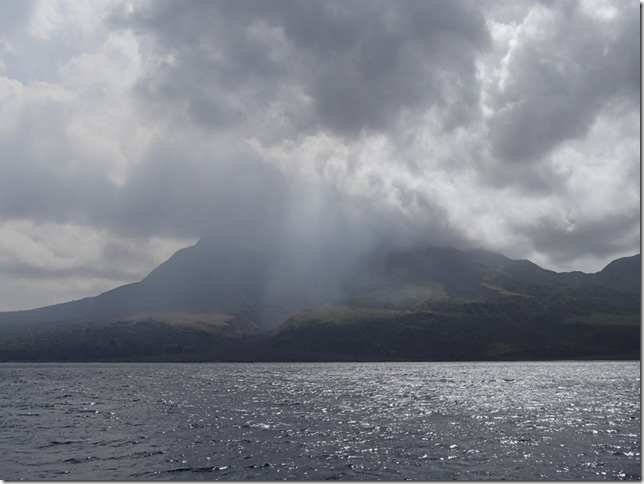 and smell some of the 400 tons of sulphur dioxide it is spewing out each
day
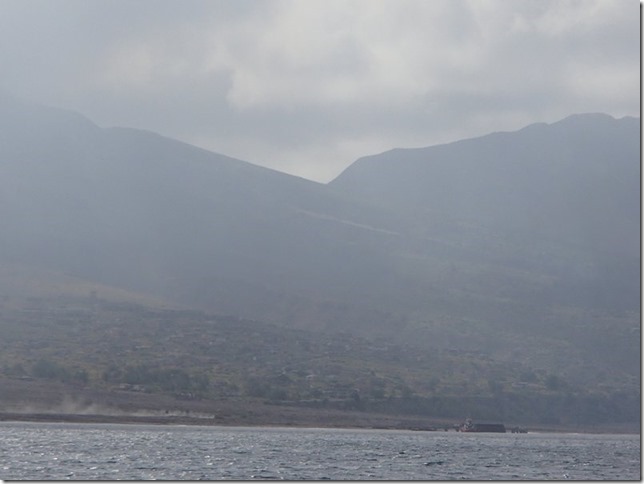 The sand trucks leave dust trails as they speed across the wasteland to
load the barges.
|